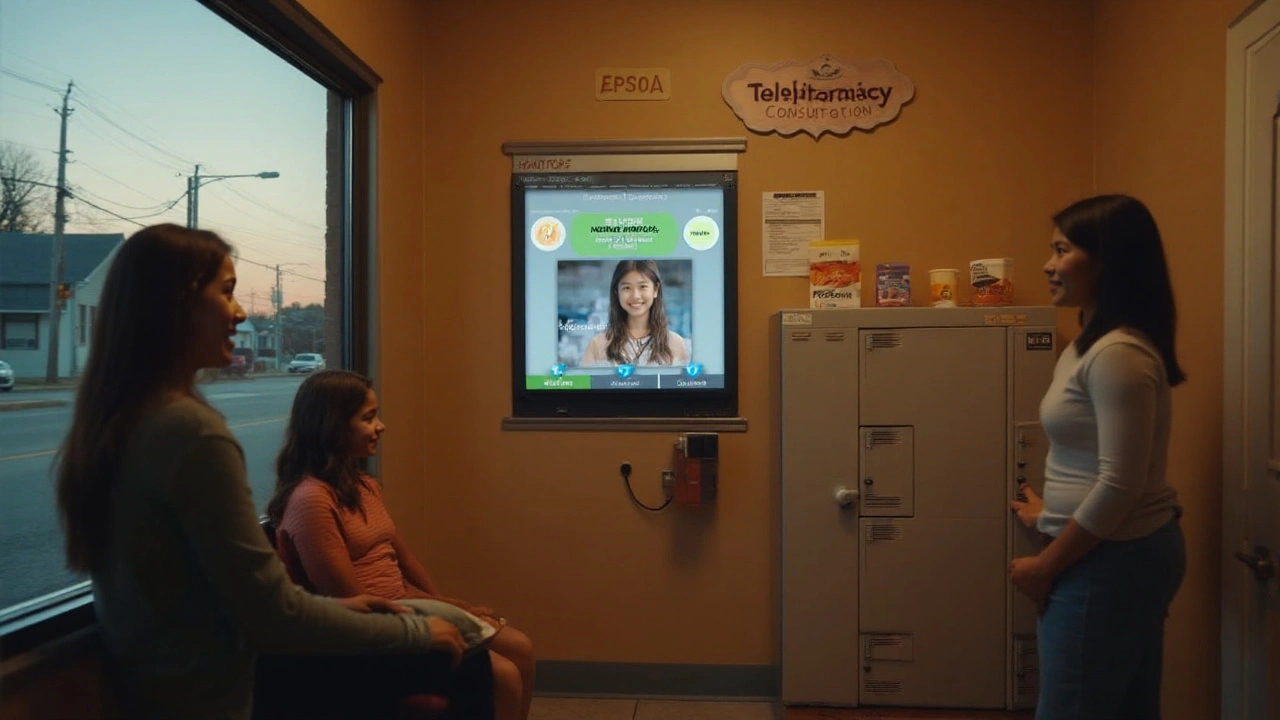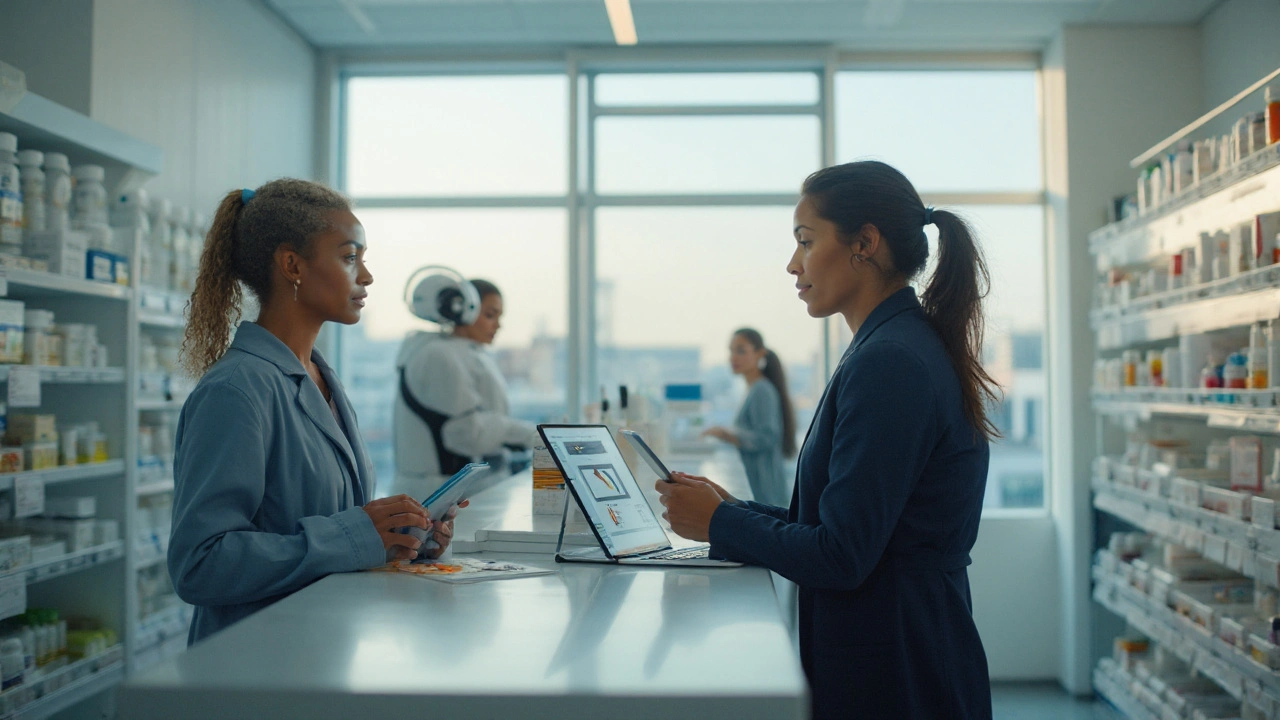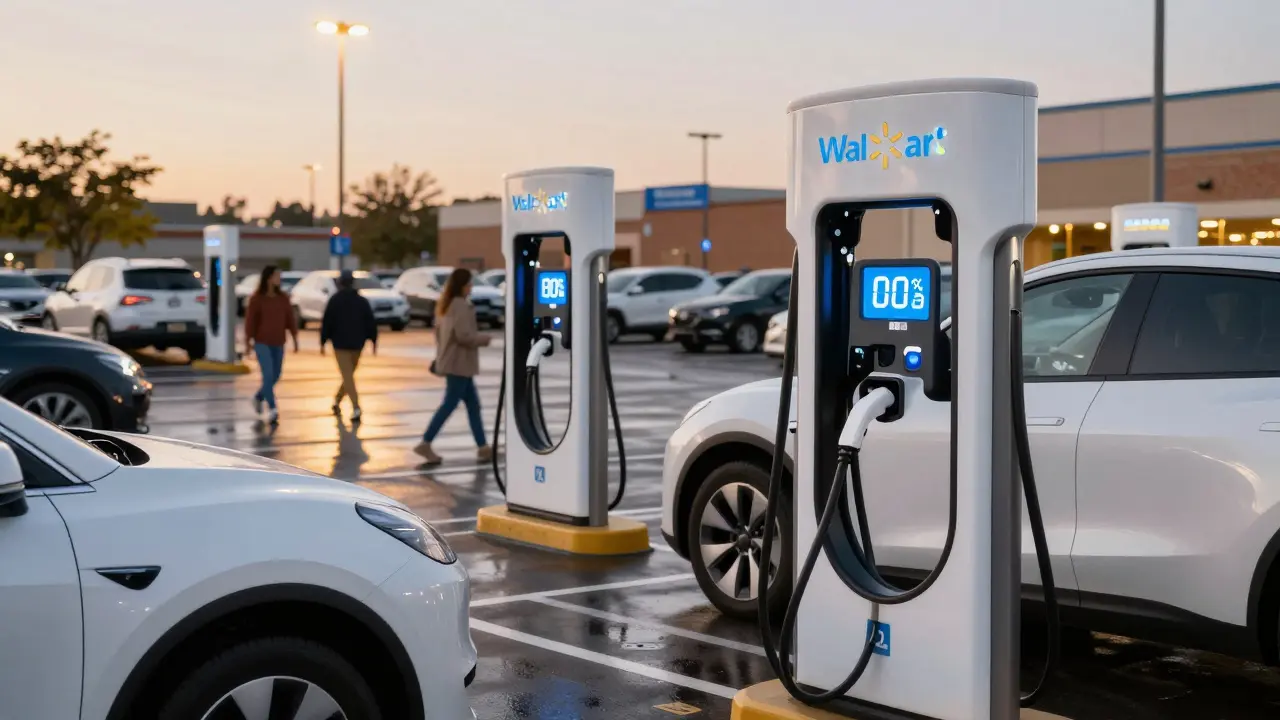You’re not imagining it: the pharmacy you knew five years ago isn’t the pharmacy you’re running (or visiting) today. Robots count pills, apps steer refills, AI flags risky interactions, and a supply chain that used to run on paper now expects item-level traceability. The payoff is real-safety, speed, margins-but so are the risks: outages, cybersecurity, patchwork rules, and vendor lock-in. Here’s the point-blank version of how tech is reshaping pharmacy in 2025, what to buy first, what to ignore, and how to measure if it’s working.
TL;DR: what’s changing now
Short on time? Here’s the quick hit list worth acting on this year.
- Automation is the new baseline: central fill, pick-to-light, pouch packs, and robots cut fill errors and free up pharmacists for clinical services.
- AI is moving from flashy to useful: drug utilization review (DUR), prior auth triage, demand forecasting, and smarter inventory-not diagnosis.
- Telepharmacy and omnichannel win on access: same-day delivery, video consults, and 24/7 chats extend reach without adding square footage.
- Compliance got teeth: FDA’s DSCSA stabilization period runs through late 2025; HIPAA, 42 CFR Part 2, PDMP, and EPCS mandates are table stakes.
- Disruption is real: remember the nationwide claims outage in 2024? Build redundancy-alternate switches, offline workflows, and manual pricing fallbacks.
The big levers reshaping pharmacy
Think in levers, not features. The pharmacies winning in 2025 stack five levers: automation, AI, omnichannel, data interoperability, and risk management. Each one shifts a stubborn cost or revenue line.
pharmacy technology stops paying for itself when it’s just “cool.” It pays when it changes labor, error rates, inventory turns, or clinical revenue. Use that lens as you read.
1) Automation and micro-fulfillment
Robotics and central fill are no longer bleeding edge. A mid-market robot in a busy community pharmacy can handle 150-200 scripts per hour, often taking 40-60% of repetitive fills. Add pick-to-light shelving and barcode verification and you slash misfills while speeding up will-call. Chain operators lean on micro-fulfillment centers for fast movers, reserving store capacity for immunizations, test-to-treat, and counseling.
Rule of thumb: if your pharmacy does 250+ scripts/day and has at least one full-time tech often focused on count-pour-cap, a dispensing robot or automated pouch packaging can return its cost inside 18-30 months-if you actually redesign workflows, not just bolt on a machine.
2) AI where it’s actually working
Forget bot doctors. The wins are behind the counter. AI models score DUR alerts so pharmacists see the 10 that matter, not the 60 that don’t. They predict which prior auths will need manual attention. They forecast demand so you don’t overstock GLP-1s or run out of beta blockers before a holiday weekend. They auto-triage patient messages so clinical staff can handle complex cases.
Guardrails: keep models on de-identified or minimum necessary data, audit outputs monthly, and document overrides. The FTC has been clear about health data misuse, and HHS’s Office for Civil Rights expects HIPAA risk analyses to include AI tools if they touch PHI.
3) Telepharmacy and omnichannel access
More states now allow remote verification and telepharmacy kiosks under a supervising pharmacist. On the patient side, frictionless refills through apps, auto-ship for maintenance meds, and 2-4 hour local delivery are table stakes in dense cities. Out in rural counties, video counseling keeps service viable when it’s tough to staff a full-time pharmacist.
Tip: promise speed where you can keep it. Consumers tolerate 2-day delivery for non-urgent meds; they expect same-day for acute antibiotics and antivirals. Segment SKUs and set clear SLAs in the app.
4) Data pipes: EPCS, PDMP, DSCSA, and the alphabet soup
E-prescribing is nearly universal, and controlled substances e-prescribing (EPCS) is mandated under federal law for Medicare Part D with state mandates filling the gaps. Most states require PDMP checks before dispensing specific schedules, so integrated PDMP is a huge time-saver. On the supply side, the Drug Supply Chain Security Act (DSCSA) requires interoperable, package-level traceability. FDA extended the “stabilization period” through late 2025 to help trading partners actually exchange EPCIS data, but the expectation is clear: go electronic, keep transaction details, and investigate suspect product fast.
5) Risk and resilience after the 2024 outage
The 2024 cyberattack on a major clearinghouse disrupted e-prescribing and claims nationwide. Pharmacies that survived it had backup claims routing, a way to price and adjudicate offline, cash pricing workflows, and posted updates that kept patients calm. Pharmacy is now part of critical infrastructure; plan like it.
| Capability | Typical Cost Range | Impact | Adoption Notes (US) |
|---|---|---|---|
| Dispensing robot (store) | $150k-$300k + service | 40-60% repetitive fills automated; 0.1-0.3 FTE pharmacist time freed | Best at 250-500 scripts/day |
| Central fill / micro-fulfillment | $500k-$3M | Labor per script down 20-40%; faster will-call | Chains, multi-site independents |
| AI DUR prioritization | $0.05-$0.20/script | Alert fatigue down; intervention quality up | Requires clinical governance |
| Telepharmacy platform | $300-$800/month/site | Remote verification; extended hours | State-permitted models vary |
| Integrated PDMP | $0.02-$0.10/query | Minutes saved per controlled fill | Compliance and time savings |
| DSCSA EPCIS readiness | $10k-$100k setup | Traceability; counterfeit risk reduced | Enforced post-stabilization |
| 2-4 hr local delivery | $6-$12/order | Retention lift; higher NPS | Urban/suburban advantage |
| Smart adherence packs/caps | $15-$40/patient/month | 10-20% adherence lift in chronic meds | Billable in some payer programs |
Step-by-step: modernize your pharmacy without burning cash
Here’s a practical sequence that works in independents and regional chains. The order matters because each step unlocks value in the next.
- Stabilize the core workflow: Map your top five time sinks. It’s usually refill calls, prior auth ping-pong, DUR overload, inventory shrink, and will-call chaos. Fix basic EHR configuration, barcode scanning, and pick-to-light shelving before buying a robot.
- Close compliance gaps: Confirm EPCS and PDMP integration, update HIPAA risk assessment, and document DSCSA processes. If 42 CFR Part 2 data (SUD) touches your system, add extra consent controls. If you skip this, every new tool becomes a liability.
- Automate the obvious: Start with packaging or counting that targets your top 100 NDCs. Move autopopular refills to central fill or pouch packs. Give a tech the title “automation lead” and 4 hours/week to tune it.
- Turn on AI with guardrails: Begin with DUR prioritization and demand forecasting. Set up a monthly review: track false positives, overrides, and any near-miss. Keep a kill switch-no black boxes without off-ramps.
- Go omnichannel: Enable app refills, two-way messaging, and clear delivery options. Publish SLAs (e.g., “urgent antibio same-day by 6 pm”). Connect your scheduling for vax and CLIA-waived tests.
- Measure like an operator, not a vendor deck: KPIs that matter-wait time (95th percentile), misfills per 10k scripts, labor minutes per script, inventory turns, abandonment rate, adherence (PDC), and clinical revenue per hour.
- Build resilience: Add a secondary switch for claims, offline adjudication rules, an incident response plan, immutable backups, and tablet hotspots. Practice once a quarter. Yes, actually practice.
Budgets? Use a 70/20/10 split for the next 12 months: 70% to foundation (workflow, compliance, cybersecurity), 20% to near-term ROI (automation, delivery), 10% to pilots (AI, at-home testing). If cash is tight, start with labor-light wins: integrated PDMP, smarter will-call bins, and appointment-based models for maintenance meds.
Heuristics that save you rework
- The 2-Week Rule: if a new tool doesn’t reduce clicks or minutes inside 14 days, pause and fix the process first.
- One-Bottleneck Focus: only attack one bottleneck per quarter-DUR noise, prior auth backlog, or will-call pileup-not all three.
- Shadow IT Check: any SaaS touching PHI must be in your HIPAA inventory with a signed BAA, period.
- People First: appoint a change champion on every shift. Tools don’t fail-adoption does.

Examples, numbers, and what “good” looks like
Benchmarks help cut through the hype. Here’s what we’re seeing in 2025 across urban and rural settings.
Community pharmacy (urban, 400 scripts/day)
Stack: robot + barcode verification + integrated PDMP + AI DUR filter + app refills + 2-4 hr delivery. Results after 6 months? Wait time at peak drops from 22 to 9 minutes, misfills down 35%, labor minutes per script cut by 18%. The extra pharmacist time shifts to vaccines and point-of-care tests, adding $12-$18k/month in clinical revenue during respiratory season. Returns the robot in 20-24 months.
Regional chain (central fill + micro-fulfillment)
Fast movers sent to central fill cut store labor variance. Stores focus on consultations and specialty drop-offs. The chain’s NLU tool (think natural language triage) auto-labels 60% of inbox messages; humans review the rest. They weathered a claims switch outage by routing 45% of scripts through a backup clearinghouse. Patients noticed the calm.
Rural telepharmacy
One supervising pharmacist supports two remote sites using high-res camera verification, with a local tech handling intake and handoff. States vary, but where permitted, it keeps doors open in deserts where the next pharmacy is 40 miles away. Video counseling actually increased med reconciliation quality because patients brought pill bottles to the camera.
Specialty/onco add-on inside a community store
With payer buy-in, a small specialty program uses AI to flag financial assistance options and predict therapy start risks (labs pending, missing PA). Therapy initiation time drops from 10 days to 5. A patient navigator plus software beats software alone every time.
Data points you can trust
- E-prescribing is now the norm across the US; national networks report billions of e-scripts annually with near-universal prescriber adoption.
- CMS’s 2025 Medicare Part D redesign caps patient out-of-pocket at $2,000, shifting demand patterns and adherence incentives-plan for more refill synchronization and adherence packaging.
- FDA’s DSCSA stabilization runs through late 2025; expect inspections to ask for electronic traceability evidence, suspect product investigations, and partner interoperability.
- Cyber incidents in healthcare keep rising. NIST’s Cybersecurity Framework 2.0 and HHS/OCR HIPAA guidance are now the common yardsticks during audits.
Checklists, cheatsheets, and decision tools
Use these to cut risk before you sign anything-or roll out half-baked workflows.
Automation readiness checklist
- Scripts/day ≥ 250 and top 100 NDCs cover 50%+ of volume
- Barcode verification used on every fill; exceptions documented
- Pick-to-light or clearly labeled zones reduce aisle wandering
- Service contract priced with uptime SLAs and loaner terms
- Floor plan and power fit a robot without blocking safety exits
- One owner named for maintenance and weekly output checks
AI governance mini-policy (one page, plain English)
- Scope: what the AI can and cannot do (e.g., prioritize alerts; not diagnose)
- Data: minimum necessary, de-identify when possible, vendor BAA signed
- Oversight: monthly chart review of 30 cases; track overrides
- Security: SSO, MFA, role-based access, 90-day access reviews
- Exit Plan: export models/predictions, 30-day wind-down clause
Telepharmacy legal sanity check
- Verify state rules for remote verification and supervising ratios
- Confirm camera resolution, logging, and secure storage meet board standards
- Ensure PDMP and EPCS stay integrated in remote workflows
- Post clear patient notices about telepharmacy and how to escalate
Cyber resilience basics (do these this quarter)
- MFA on everything, including vendor portals and claims switches
- Immutable, offline backups; test restore monthly
- Secondary claims routing; offline price table for cash/insurance
- Incident runbook with roles, contacts, and prewritten patient messages
- Phishing drills; require passphrases, not short passwords
ROI cheat sheet
- Labor minutes per script x wage = baseline. Target 10-20% cut post-automation.
- Inventory turns: chronic meds 10-12/year is healthy; if you’re at 6-7, you’re overstocked.
- DUR alerts: aim for a 30-50% reduction in low-value alerts surfaced to pharmacists.
- Adherence (PDC ≥ 80%): lift by 5-10 points with packaging + sync + reminders.
- Clinical revenue/hour: track vax, POCT, MTM; set a floor (e.g., $100/hour of clinical time).
FAQ and next steps
What should I buy first?
Don’t start with the robot. Start with workflow basics (barcode, pick-to-light), integrated PDMP and EPCS, and an app that reduces front-of-store phone time. If you’re still over 20 labor minutes per 10 scripts after that, price automation.
How do I stay compliant with DSCSA in 2025?
Use a system that ingests and stores EPCIS transaction data, ties it to receiving, and lets you run suspect product investigations quickly. Train staff on quarantine and documentation. FDA has kept a stabilization window through late 2025, but inspectors will still expect proof you can trace and respond.
Is AI safe in the pharmacy?
It can be when it reduces noise and doesn’t make clinical decisions on its own. Keep a human in the loop, document overrides, and include AI systems in your HIPAA risk analysis. The FTC has fined firms for shady health data practices; treat models like any other system that touches PHI.
How do I prevent another 2024-style outage disaster?
Add a secondary claims route, keep a local cash price table, train staff on offline workflows, and communicate early with patients. Hotspot backups and battery-powered label printers kept some stores dispensing while others went dark.
What about drones and 24/7 lockers?
Drones are still pilot-only in most US markets under current FAA rules, but lockers and smart pickup boxes are working now. They smooth peaks, reduce queue times, and fit well with app scheduling.
Will telepharmacy replace in-person care?
Not for everything. It extends coverage and hours and keeps rural sites viable. But vaccinations, POCT, and some consults still benefit from in-person care. The mix is the play.
What did the 2025 Part D cap change?
With a $2,000 annual cap on out-of-pocket costs, adherence is more affordable for seniors. Expect steadier refill patterns and a stronger case for sync programs. It’s a good time to pitch packaging to eligible patients.
Next steps tailored by role
- Independent owner: do a two-week time study, fix barcode scanning, and price a small automation pilot. Set a $/hour goal for clinical services before flu season.
- Regional ops lead: build a 90-day central fill rollout plan for top movers; standardize PDMP integration across sites; add an AI DUR pilot in three high-volume stores with a governance council.
- Health system pharmacy director: integrate PDMP and EPCS across inpatient-outpatient lines; expand transitions-of-care calls with AI triage; align DSCSA data across wholesaler feeds.
- IT/security: map data flows, enforce SSO/MFA, run a HIPAA risk analysis that includes AI, and simulate a claims switch outage end-to-end.
Troubleshooting quick hits
- Robot underperforming: check NDC mapping, restock cadence, and whether top 100 NDCs are loaded. Often it’s a formulary mismatch, not the machine.
- AI alerts still noisy: retrain thresholds, remove low-risk interactions, and prioritize by patient risk score and polypharmacy count.
- Delivery bleeding cash: set delivery windows, batch routes, and require app scheduling for same-day; reserve couriers for acute meds.
- DSCSA data mismatches: assign one person to reconcile EPCIS vs. physical receipts daily; escalate recurring issues with your wholesaler’s tech team.
- Staff pushback: schedule 15-minute daily huddles for two weeks post-launch; collect one friction point per person; fix the top three fast.
The pharmacies that pull ahead this year won’t be the flashiest-they’ll be the ones that pick the right lever, in the right order, and measure like hawks. Build on the basics, automate the obvious, and keep your humans doing what only humans can do: catching nuance, calming patients, and making judgment calls when the screen gets it wrong.





